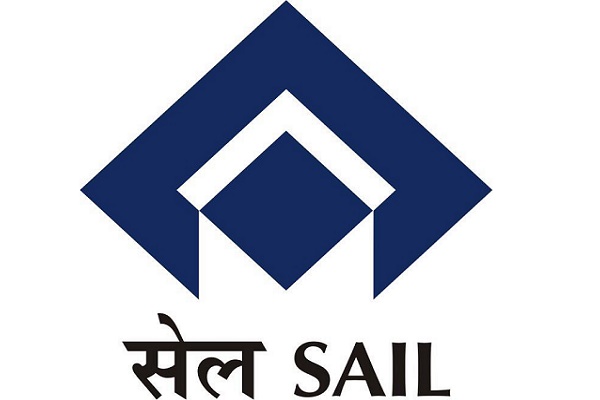Gold trading range for the day is 60640-61520 - Kedia Advisory

GOLD
Gold prices rose by 0.18% to settle at 61,020 yesterday, primarily driven by a discouraging U.S. economic report. This report is likely to ease the concerns of some Federal Reserve Board members who worry that the U.S. economy is overheating. The U.S. employment situation report for October revealed that non-farm payrolls increased by 150,000, falling short of market expectations of a 170,000 gain. This compares to a revised increase of 297,000 non-farm jobs in the September report. The October jobs report aligns with the views of U.S. monetary policy doves, who advocate for the Federal Reserve to halt interest rate hikes. Consequently, the U.S. dollar index weakened, and U.S. Treasury yields dipped following the release of the employment data. Additionally, global central banks continued to increase their gold reserves, with a net addition of 77 metric tons in September. On the other hand, in India, physical gold dealers offered discounts for a fourth consecutive week due to higher domestic prices, leading consumers to refrain from making purchases. In China, demand for gold remained subdued, with premiums over global spot prices little changed from the previous week, ranging from $25 to $40 per ounce. From a technical perspective, the gold market has witnessed a rise in open interest by 0.42% to reach 14,077 contracts, while prices increased by 109 rupees. Support for gold is currently at 60,830, and a breach of this level could lead to a test of 60,640. On the upside, resistance is anticipated at 61,270, and a move above this level may result in prices testing 61,520.
Trading Ideas:
* Gold trading range for the day is 60640-61520.
* Gold gains boosted by a downbeat U.S. economic report
* U.S. employment situation report for October saw the key non-farm payrolls number come in at up 150,000
* Physical gold dealers in India offered discounts for a fourth consecutive week
SILVER
Silver prices surged by 1.19% to reach 72,252, fueled by a weaker US labor market report. The data suggested a slowdown in job growth, leading to the belief that the Federal Reserve might halt its interest rate tightening cycle. The October job report revealed an increase of 150,000 jobs, significantly below market expectations and half of September's figure.In addition, the ISM Services PMI dropped to 51.8 in October, the lowest in five months, further indicating economic challenges. The Bank of England also decided to maintain its high-interest rates. On the global stage, central banks like the US Federal Reserve and the European Central Bank opted to keep interest rates unchanged, reflecting their cautious approach to economic conditions. From a technical perspective, silver experienced short covering, with a decrease in open interest and an increase in prices. Support for silver lies at 71,320, with a potential test of 70,380 if breached. Resistance is at 72,850, and a move beyond it could lead to prices reaching 73,440. In summary, silver prices benefited from a slowing US labor market, which lessens the likelihood of further interest rate hikes by the Federal Reserve. The global economic outlook remains uncertain, with central banks maintaining their cautious stance on interest rates. From a technical standpoint, silver shows signs of short covering, with clear support and resistance levels.
Trading Ideas:
* Silver trading range for the day is 70380-73440.
* Silver rose after data indicating a slowdown in the US labor market
* The U.S. dollar index weakened and U.S. Treasury yields dipped following the jobs report.
* US central bank maintained the fed funds rate for the second consecutive time as policymakers considered signs of a gradual labor market loosening
CRUDE OIL
Crude oil experienced a significant drop, down 2.84% to 6696, mainly due to easing Middle East tensions. Concerns about oil supply were alleviated, influencing market sentiment. U.S. job growth slowed more than expected in October, official data showed, while wage inflation cooled, pointing to an easing in labour market conditions. The data could bolster the view that the U.S. Federal Reserve need not raise interest rates further. Meanwhile, China's manufacturing activity unexpectedly contracted in October. The official purchasing managers' index (PMI) fell to 49.5 in October from 50.2, dipping back below the 50-point level demarcating contraction from expansion, data from the National Bureau of Statistics showed. On Friday, a private sector survey showed China's services activity expanded at a slightly faster pace in October, but sales grew at the softest rate in 10 months and employment stagnated as business confidence waned. On the supply side, Saudi Arabia is expected to reconfirm an extension of its voluntary oil output cut of 1 million barrels per day through December. U.S. field production of crude oil rose to a new monthly record in August at 13.05 million barrels per day, the Energy Information Administration said. Output rose 0.7% in August from the month prior, the data showed. From a technical perspective, the market witnessed fresh selling, with increased open interest and a decrease in prices. Support for crude oil is at 6596, with the possibility of testing 6496 if it breaks. Resistance is at 6880, and a move above it could lead to prices testing 7064.
Trading Ideas:
* Crudeoil trading range for the day is 6496-7064.
* Crude oil dropped as supply concerns driven by Middle East tensions eased.
* U.S. job growth slowed more than expected in October, while wage inflation cooled, pointing to an easing in labour market conditions
* China's manufacturing activity unexpectedly contracted in October.
NATURAL GAS
Natural gas prices saw a 1.18% increase, settling at 292 per million British thermal units (MMBtu) as several factors influenced the market. One significant driver was the anticipation of seasonally colder weather in mid-November. However, meteorologists projected that temperatures would remain higher than normal through mid-November, potentially limiting heating demand. The weather forecast is crucial in assessing natural gas demand, particularly during the winter season when heating needs typically drive consumption. The meteorological projections of warmer-than-normal temperatures through November 18 could potentially keep heating demand lower than usual for this time of year. Another factor impacting natural gas prices is the record output and abundant gas in storage. Average gas output in the Lower 48 U.S. states rose to 106.6 billion cubic feet per day (bcfd) so far in November, up from the previous record of 104.2 bcfd in October. Financial firm LSEG offered insights into U.S. gas demand. They forecasted that U.S. gas demand in the Lower 48 states, including exports, would decrease from 109.9 bcfd this week to 101.3 bcfd next week due to milder weather conditions reducing heating demand. From a technical perspective, the market is currently experiencing short covering, as open interest dropped by -4.8% to settle at 14,329. Natural gas prices are currently finding support at 286.8 per MMBtu, and if they fall below this level, they could test 281.7. On the other hand, resistance is expected at 297.3, and a move above this level could lead to prices testing 302.7.
Trading Ideas:
* Naturalgas trading range for the day is 281.7-302.7.
* Natural gas edged up with seasonally colder weather coming in mid-November.
* The amount of gas flowing to U.S. liquefied natural gas (LNG) export plants rose to near-record highs.
* Meteorologists projected temperatures would remain higher than normal through mid-November
COPPER
Copper prices experienced a slight decline of -0.07%, settling at 709.9. This decrease was primarily influenced by higher inventories in exchange-registered warehouses. However, the impact of a weaker U.S. dollar and anticipation of key U.S. data releases limited the extent of the decline. One contributing factor to the drop in copper prices was the increase in copper stocks in LME-registered warehouses after a recent decline. Additionally, copper inventories in warehouses monitored by the Shanghai Futures Exchange saw a notable 11.3% rise in a week. On the supply side, lawmakers in Panama made significant changes to a proposed bill related to mining concessions. The focus shifted from canceling a recently approved mining concession to enforcing a nationwide ban on all new mining concessions. However, China's manufacturing data fell short of market expectations, casting uncertainty on copper's demand outlook. Meanwhile, copper production in Chile recorded a 4.1% year-on-year increase in September, reaching 457,393 tons. The global refined copper market showed a 33,000 metric ton deficit in August, compared to a 30,000 metric ton deficit in July, indicating a tightening supply-demand balance. From a technical perspective, the copper market saw long liquidation, with a decrease in open interest by -0.42% to settle at 6,434. Copper prices fell by -0.5 rupees. Support is currently found at 707, with the potential for a test of 704.1 if it drops below this level. Resistance is anticipated at 713.1, and a move above this point could lead to testing 716.3.
Trading Ideas:
* Copper trading range for the day is 704.1-716.3.
* Copper pared gains after data showed higher inventories in exchange-registered warehouses
* Copper stocks in the LME-registered warehouses rose after their recent decline
* Copper inventories in warehouses monitored by the Shanghai Futures Exchange rose 11.3% this week.
ZINC
Zinc prices rose by 0.81% to settle at 223.55 primarily driven by Nyrstar's decision to temporarily close two zinc mines in Tennessee due to weak prices and inflationary pressures. Nyrstar, majority-owned by Trafigura, plans to pause production at its Middle Tennessee Mines at the end of November, impacting zinc supply. China's manufacturing PMI dropped to 49.5 in October, reflecting a fragile economic recovery. The NBS Non-Manufacturing PMI also declined to 50.6 in October, down from 51.70 the previous month. The International Lead and Zinc Study Group projected a surplus of 248,000 metric tons in the global refined zinc market for this year, a significant shift from the previously expected deficit of 45,000 tons, primarily due to lower-than-anticipated demand. Global demand for refined zinc is now expected to increase by 1.1% in 2023, falling short of the April estimate. In China, refined zinc output increased in September to 544,000 metric tons, indicating a 3.31% month-on-month growth and a 7.94% year-on-year increase. However, this growth was below expectations. Cumulative refined zinc output for the first nine months of the year stood at 4.85 million metric tons, reflecting a year-on-year increase of 9.84%. From a technical perspective, zinc market conditions showed short covering, with a decrease in open interest by -1.57% to settle at 3,572. Zinc prices increased by 1.8 rupees. Support is currently observed at 222.1 per ton, and if it falls below this level, a test of 220.5 is possible. Resistance is anticipated at 224.7, and a move above this level could lead to testing 225.7.
Trading Ideas:
* Zinc trading range for the day is 220.5-225.7.
* Zinc prices rose as Nyrstar plans to temporarily close two zinc mines.
* Global zinc market surplus widens in August – ILZSG
* The global zinc market to show a surplus of 148,000 metric tons this year and 238,000 tons in 2024.
ALUMINIUM
Aluminium prices increased by 0.63% to settle at 207.1 due to reduced production in China's Yunnan province. Dry season constraints on hydropower sources led smelters to cut production. Smelters in Yunnan initiated cuts of 1.15 million metric tons to comply with curbs expected until April, ranging from 9% to 40% of capacity. Yunnan, the fourth-largest aluminium producing region in China, holds approximately 12% of the country's total capacity, with 5.7 million tons. It has benefited from cheap hydropower, but water shortages are now impacting output. Global aluminium production has risen this year, notably in Europe as power prices stabilized, and in China's Yunnan province as hydro power restrictions eased. However, subdued demand, especially in Europe, due to weak economic activity, has challenged the market. Analysts have revised their expectations from market deficits to surpluses for this year and the next. Aluminium is a crucial material used in packaging, transport, and construction. From a technical perspective, the aluminium market experienced short covering, with a decrease in open interest by -2.6% to settle at 3,070. Aluminium prices rose by 1.3 rupees. Support is currently at 206.2 per ton, and a drop below this level could lead to a test of 205.2. Resistance is anticipated at 207.8, and a move above it could drive prices to 208.4.
Trading Ideas:
* Aluminium trading range for the day is 205.2-208.4.
* Aluminium rose as smelters in China's Yunnan province trimmed production
* Global aluminium production has ramped up this year as smelters come back on line in Europe
* Market surpluses of 338,000 tons this year and 250,000 tons in 2024, an about-face from deficits 191,750 tons
COTTONCANDY
Cotton candy prices experienced a slight dip of -0.27%, settling at 58,460, largely attributed to profit booking following a recent price increase. The decline comes as India's cotton production for the 2023/24 season is expected to fall by 7.5% to 29.5 million bales due to lower planted area and the impact of El Nino weather conditions, according to the CAI. The CAI also noted that imports of cotton could increase to 2.2 million bales in the current marketing year, starting from October 1, compared to 1.25 million bales in the previous year. The USDA's October WASDE report supports this downward trend in cotton production, as it lowered the U.S. production forecast for 2023/24 to 12.8 million bales due to reduced yields in Texas. A significant development in the global cotton landscape is the projection that Brazil's cotton production in 2023/24 is expected to surpass that of the United States for the first time. India's own cotton production for the 2022-23 season was slightly revised upwards by the CAI to 31.8 million bales, but this remains lower than the government's estimate of 34.3 million bales. Looking ahead to the 2023-24 season, the Indian Cotton Federation anticipates a production of 33-34 million bales. From a technical perspective, the cotton candy market is currently witnessing long liquidation, with a 2.86% drop in open interest, settling at 102, while prices declined by -160 rupees. Support levels for cotton candy stand at 58,340 and 58,230, with resistance likely at 58,580, and a move above this level could see prices testing 58,710.
Trading Ideas:
* Cottoncandy trading range for the day is 58230-58710.
* Cotton dropped on profit booking after prices gained as India's cotton production in 2023/24 is likely to fall 7.5%.
* Imports could rise to 2.2 million bales in the marketing year that started on Oct. 1, up from the last year's 1.25 million bales
* USDA cut U.S. production in 2023/24 to 12.8 million bales
* In Rajkot, a major spot market, the price ended at 27316.15 Rupees gained by 0.22 percent.
TURMERIC
Turmeric prices registered a notable gain of 1.66%, settling at 13,846. This surge is primarily driven by concerns over potential yield losses due to unfavorable weather conditions. However, there are limitations to this upward movement as improved crop conditions resulting from favorable weather have been reported. The Indian Meteorological Department (IMD) has projected that October will be drier than average, potentially impacting crop growth. Despite this, the current levels of buying activity and decreasing supplies are contributing to price stability. Additionally, there is support for improved export opportunities. Demand for turmeric has increased both in developed and emerging nations, resulting in a 25% rise in exports. One factor affecting turmeric production is the expectation of a 20-25% decline in seeding this year, particularly in regions like Maharashtra, Tamil Nadu, Andhra Pradesh, and Telangana. In terms of exports, turmeric has shown a positive trend. From April to August 2023, exports rose by 11.51% compared to the same period in 2022. However, there was a decrease in exports in August 2023, with a drop of 18.20% compared to July 2023. It's worth noting that exports in August 2023 were 6.67% lower than the same month in the previous year. From a technical standpoint, the turmeric market is currently experiencing fresh buying. Open interest increased by 0.23%, settling at 13,270, while prices rose by 226 rupees. Support levels for turmeric are at 13,576 and 13,304, with resistance likely at 14,054, and a move above this level could lead to prices testing 14,260.
Trading Ideas:
* Turmeric trading range for the day is 13304-14260.
* Turmeric gained due to the potential for yield losses caused by the crop's unfavourable weather.
* However, upside seen limited amid improved crop condition due to favorable weather condition.
* Expectations for a 20–25 percent decline in turmeric seeding this year
* In Nizamabad, a major spot market, the price ended at 13719 Rupees gained by 0.45 percent.
JEERA
Jeera, witnessed a decline of -0.93% in prices, settling at 40,140. This dip is primarily attributed to favorable conditions for crop sowing, with adequate soil moisture and favorable weather expected to boost overall sowing activities. The upcoming sowing season for jeera is anticipated to be normal, thanks to the conducive weather conditions. Stockists have shown interest in buying due to recent price declines, which has triggered short covering. On the global front, demand for Indian jeera has experienced a decline as buyers have preferred other sources like Syria and Turkey, primarily due to higher prices in India. Export activity is expected to remain subdued in the coming months, reflecting the seasonality of the export market. One noteworthy factor is the possibility of China purchasing Indian cumin in October-November before the arrival of new cumin, adding an element of uncertainty to the market dynamics. In terms of exports, jeera has experienced a significant drop. From April to August 2023, jeera exports decreased by 23.76% compared to the same period in 2022. There was also a decline in jeera exports in August 2023, with a 2.61% drop compared to July 2023. August 2023 exports were down by a substantial 66.98% compared to the same month in the previous year. From a technical standpoint, the jeera market is currently under long liquidation. Open interest decreased by -10.5%, settling at 3,144, while prices fell by -375 rupees. Support levels for jeera are at 38,650 and 37,150, with resistance likely at 41,890. A move above this level could see prices testing 43,630.
Trading Ideas:
* Jeera trading range for the day is 37150-43630.
* Jeera dropped as adequate soil moisture, and favorable weather condition for crop will boost the overall sowing activities.
* The upcoming sowing of jeera that is expected to remain normal due to favorable weather condition.
* Stockists are showing interest in buying on recent downfall in prices triggering short covering.
* In Unjha, a major spot market, the price ended at 43424.75 Rupees gained by 0.19 percent.
Views express by all participants are for information & academic purpose only. Kindly read disclaimer before referring below views. Click Here For Disclaimer






















